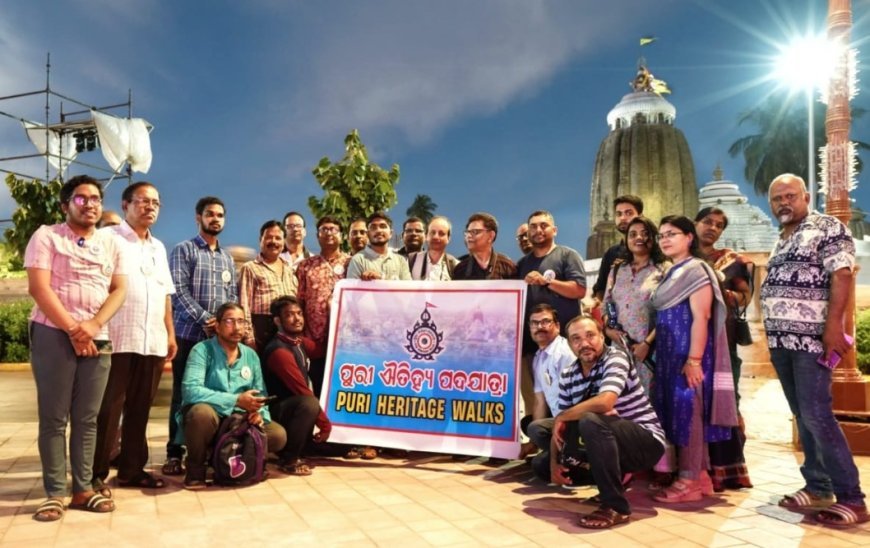Heritage enthusiasts embrace Goshani Jatra, showcasing Odisha's rich spiritual legacy

Bhubaneswar, Oct 14: The essence of Jagannath Culture is beautifully encapsulated in a blend of philosophies, including Vaishnavism, Shaivism, Shakta Upasana, Buddhism, Tantricism, and Sikhism. This rich tapestry of beliefs is vividly reflected in the “Goshani Jatra,” celebrated during Durga Puja. To immerse participants in this socio-religious-cultural tradition, the Puri Heritage Walks Group organized a “Goshani Walk” on Sunday, attracting over 30 heritage enthusiasts from various regions of Odisha.
The origins of the “Goshani Jatra” trace back to the 12th century, coinciding with the construction of the Puri Jagannath Temple. The chief “Goshani,” Kakudikhai, symbolizes Goddess Bimala, with her idol uniquely immersed on “Dashami” day, unlike other Goshani deities, which are immersed on “Ekadashi.” Barabati, regarded as Kakudikhai’s elder sister, is the largest Goshani.
Mythology experts describe “Goshani” as a unified goddess representing Laxmi, Saraswati, and Kali. Additionally, statues of Ganesh, Kartik, Ganga, and Yamuna accompany the deity. The Goshani tradition is unique to Puri, with clay statues adorned in Kalingan style, embodying a distinctive aura through their warrior-like postures.
At the end of the heritage walk, senior priest of the Sri Jagannath Temple, Sidheswar Mohapatra, shared insights on the evolution of the “Goshani Jatra” into an annual celebration. He explained that the term “Goswamini” in Sanskrit transformed over time into “Goshani,” reflecting local vernacular.
Among the prominent attendees of the “Goshani Walk” were Dipak Samantrai, author and historian, and Kishore Bit, a renowned photographer, both of whom savored the rich traditions of the Goshani Yatra, culminating at the Jagannath Temple for immersion.
The annual Durga Puja festival in Puri highlights the “Goshanis,” celebrated with affection due to their deep-rooted socio-cultural significance. The vibrant rituals continue for 16 days, from “Ashwina Krushna Paksha Mulastami” to “Shukla Paksha Navami,” showcasing Goshani idols, including “Maa Kakudikhai,” “Barabati,” “Janhikhai,” and “Sunya Goshani.”
Interestingly, the “Nagas,” traditionally responsible for the safety of the Shree Jagannath Temple through martial arts, originate from the Khalsa sect of Sikhism. Their presence at the “Goshani Jatra” exemplifies the universal acceptance and association of the Jagannath culture and its traditions across India.




